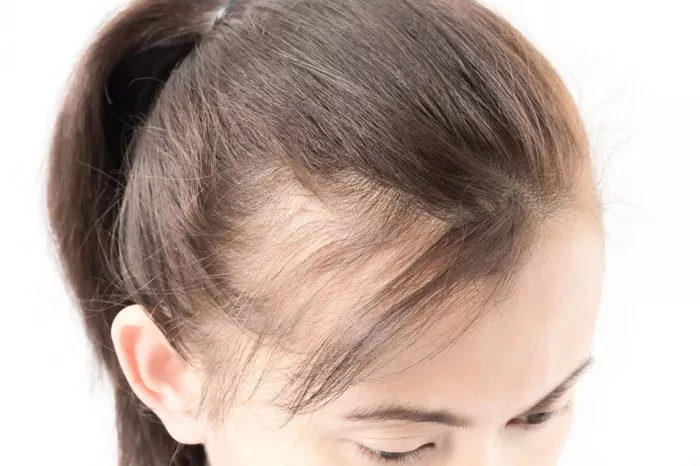Hair is not just a biological feature; it’s often intricately tied to one’s identity, confidence, and sense of self. Amidst the myriad factors influencing hair health, seasonal hair loss stands as a common concern for many. This exploration aims to dissect the phenomenon, addressing the pressing question – Does Seasonal Hair Loss Grow Back?
I. The Ebb and Flow of Hair Growth: Understanding the Hair Growth Cycle
1. The Complex Dance: An Overview of the Hair Growth Cycle
To comprehend the intricacies of seasonal hair loss, it’s crucial to delve into the fundamentals of the hair growth cycle. The cycle comprises three main phases: anagen (growth), catagen (transitional), and telogen (resting). Each hair strand undergoes these phases independently, making the process dynamic and continuous.
2. Shedding as a Natural Process: The Telogen Phase Explained
The telogen phase, often referred to as the resting phase, is when shedding occurs. It’s a natural part of the cycle, and during this time, the hair follicle is in a state of rest before regenerating. The shedding of telogen hairs is a normal physiological process, but when it becomes more noticeable during specific seasons, it’s termed seasonal hair loss.
II. Unveiling Seasonal Hair Loss: Causes and Patterns
1. Seasonal Influences: Identifying Triggers for Hair Shedding
Seasonal hair loss typically follows a pattern, with increased shedding occurring during specific times of the year. Factors such as changes in sunlight exposure, temperature variations, and hormonal fluctuations can contribute to this phenomenon. Understanding these triggers is crucial in deciphering whether the hair lost during seasonal shedding will grow back.
2. Telogen Effluvium: When Seasonal Shedding Intensifies
In some cases, seasonal hair loss may escalate to a condition known as telogen effluvium. This occurs when a significant number of hair follicles simultaneously enter the telogen phase, leading to noticeable shedding. Identifying the underlying causes, whether related to seasonal changes or other stressors, is pivotal in determining the potential for regrowth.
III. The Role of Nutrition and Lifestyle: Nourishing Hair Follicles for Regrowth
1. Nutrient Deficiencies: Addressing Internal Factors
The health of your hair is intricately linked to your overall well-being. Nutrient deficiencies, particularly in vitamins and minerals essential for hair health, can contribute to increased shedding. Adequate intake of nutrients like iron, vitamin D, and biotin plays a vital role in supporting the regrowth of hair lost during seasonal shedding.
2. Lifestyle Factors: Stress, Sleep, and Hair Health
Stress and inadequate sleep are known culprits in disrupting the hair growth cycle. Managing stress through relaxation techniques and prioritizing sufficient sleep can positively impact hair regrowth. Adopting a healthy lifestyle, including regular exercise and a balanced diet, contributes to the overall vitality of hair follicles.
IV. Treatment Approaches: Navigating Options for Regrowth
1. Topical Treatments: Stimulating Hair Follicles
Several topical treatments, such as minoxidil, aim to stimulate hair follicles and promote regrowth. While these options are not specific to seasonal hair loss, individuals experiencing persistent shedding may explore these solutions under the guidance of a healthcare professional.
2. Professional Interventions: Consulting with Dermatologists
For those grappling with significant hair loss, consulting with a dermatologist is essential. Dermatologists can assess the underlying causes, recommend targeted treatments, and provide personalized guidance on regaining hair thickness and volume.
Conclusion: Nurturing Resilience in the Tresses of Change
In conclusion, the query of Does Seasonal Hair Loss Grow Back unravels a multifaceted narrative influenced by the delicate dance of nature, physiology, and lifestyle. Seasonal shedding is a natural occurrence, and the majority of hair lost during this phase regrows as part of the continuous cycle.
Understanding the nuances of the hair growth cycle, identifying potential triggers, and adopting a holistic approach to health and wellness contribute to the resilience of hair follicles. While seasonal hair loss may cause temporary concern, the regrowth process exemplifies the inherent strength and adaptability of our bodies.
Navigating the complexities of seasonal hair loss involves recognizing when shedding surpasses normal levels and seeking professional guidance when necessary. By fostering a mindful approach to overall health and hair care, individuals can embark on a journey of nurturing resilience in the tresses of change, embracing the cyclical nature of the hair growth process with confidence and understanding.

